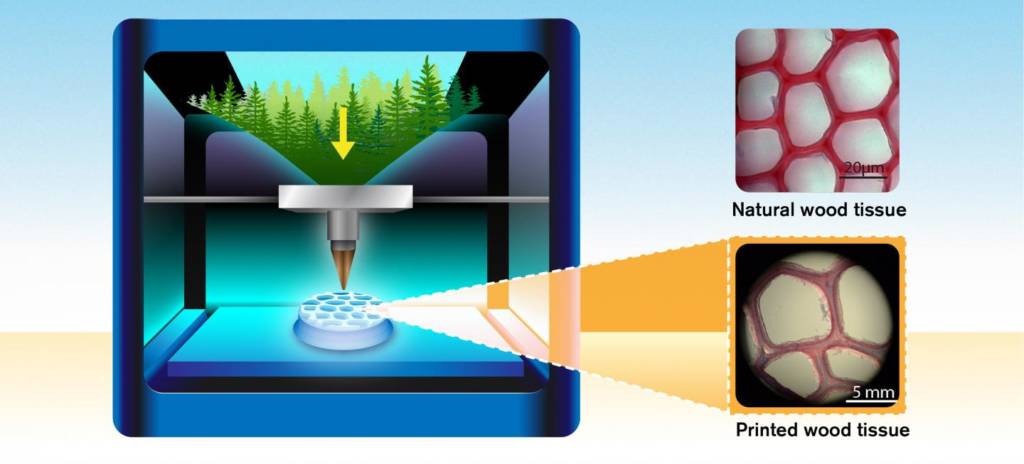A 3D printing process that uses a wood-based ink to produce components with the unique ‘ultrastructure’ of wood has been demonstrated by a group of researchers from Sweden’s Chalmers University.
It is claimed that the technology could ultimately enable wood products to be “grown” to order.

The breakthrough builds on earlier research carried out by the team in which a 3D printing ink was produced by converting wood pulp into a nanocellulose gel.
By also interpreting and digitising wood’s genetic code the technique is able precisely control the arrangement of key structural components known as cellulose nanofibrils. This enables the technique to reproduce many of the desirable properties of natural wood – such as porosity, toughness and torsional strength.
A further advance is the addition of hemicellulose, a natural component of plant cells, to the nanocellulose gel. The hemicellulose acts as a glue, giving the cellulose sufficient strength to be useful, in a similar manner to the natural process of lignification, through which cell walls are built.
The project’s leader Professor Paul Gatenholm said that the technique paves the way for new ways of producing sustainable products, effectively growing them to order. “It means that those products which today are already forest-based can now be 3D printed…and the metals and plastics currently used in 3D printing can be replaced with a renewable, sustainable alternative.”
Gatenholm’s group has already used the technique to developed a prototype for an innovative packaging concept. The team printed out honeycomb structures, with chambers in between the printed walls, and then managed to encapsulate solid particles inside those chambers. Cellulose has excellent oxygen barrier properties, meaning this could be a promising method for creating airtight packaging for foodstuffs or pharmaceuticals for example.
Alongside applications in healthcare products and clothing, Gatenholm also sees potential for the technology in space, believing that it offers the perfect first test bed to develop the technology further. “The source material of plants is fantastically renewable, so the raw materials can be produced on site during longer space travel, or on the moon or on Mars. If you are growing food, there will probably be access to both cellulose and hemicellulose,” he said.

